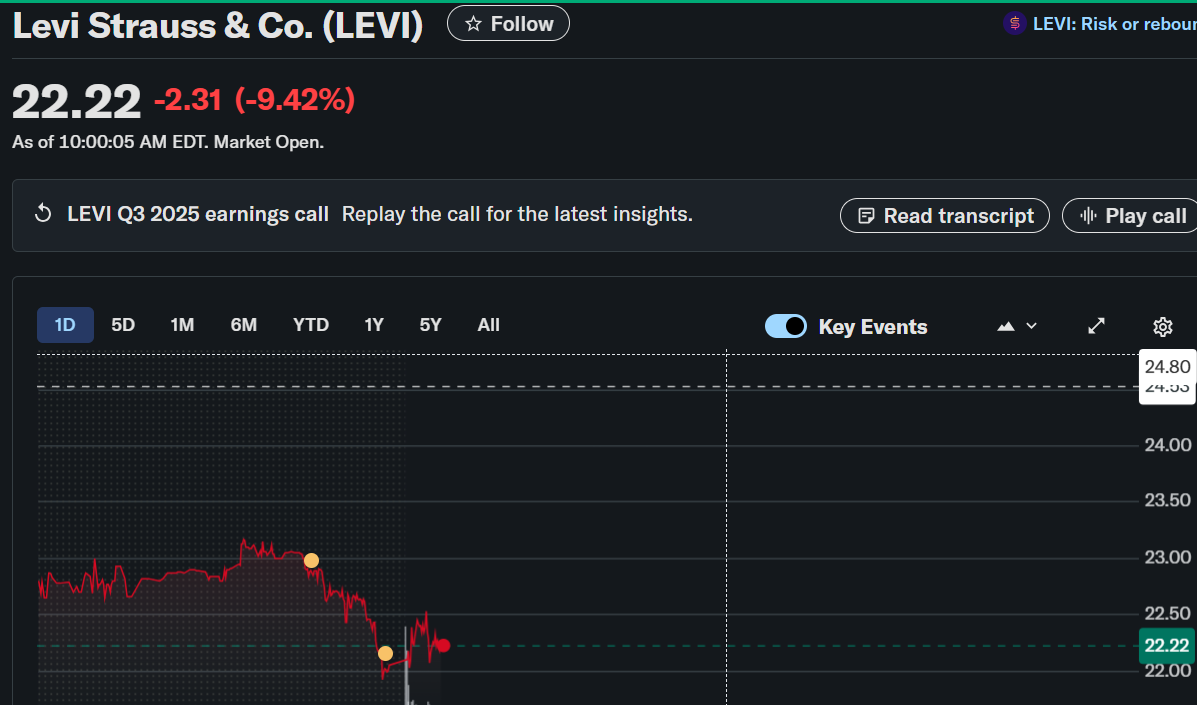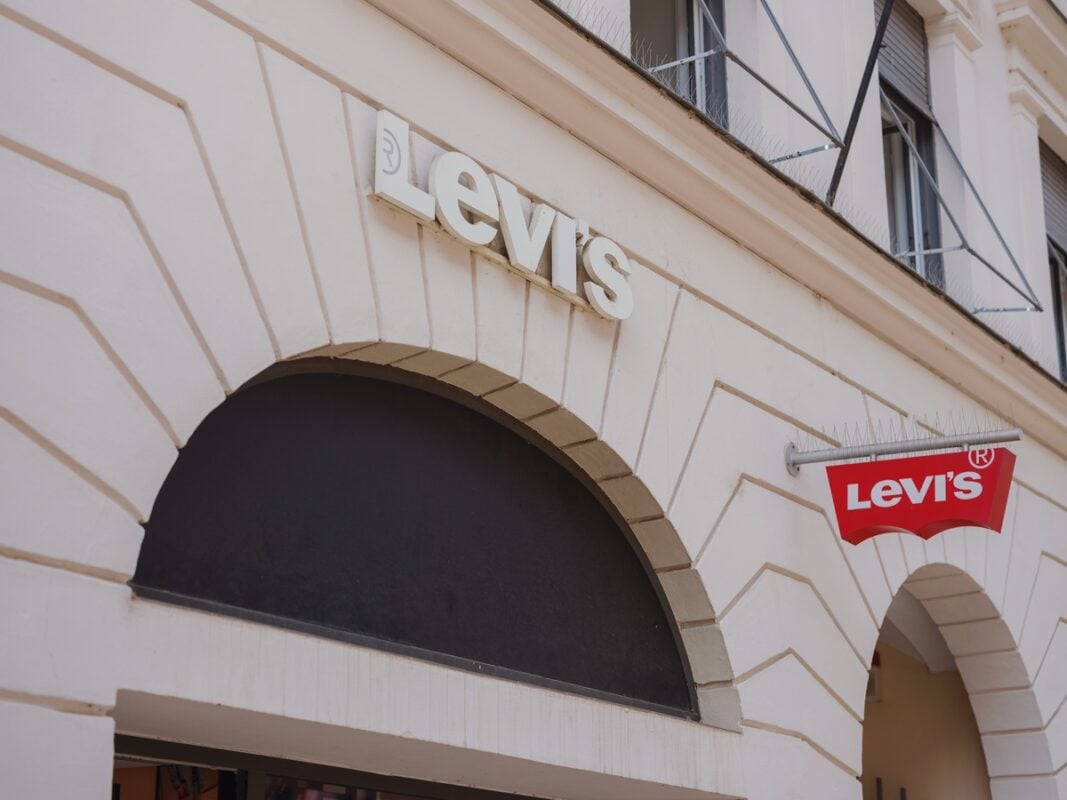TLDR
- Levi Strauss stock trades at $22.46, down 8.43% after Q3 results.
- Company reports high single-digit revenue growth for the fourth straight quarter.
- Direct-to-consumer sales up 9%; e-commerce up 16%.
- Gross margin expanded by 110 basis points to 61.7%.
- Full-year revenue and EPS guidance raised despite tariff and cost headwinds.
Levi Strauss & Co. (NYSE: LEVI) shares traded at $22.46, down 8.43% in early trading on October 10, 2025, even as the company delivered another quarter of strong performance.

The jeans and apparel giant posted high single-digit organic revenue growth for the fourth consecutive quarter and raised its full-year revenue and earnings outlook.
For the quarter, adjusted diluted EPS stood at $0.34, while gross margin expanded by 110 basis points to 61.7%, reflecting effective pricing and strong execution.
Levi Strauss & Co., $LEVI, Q3-25. Results:
📊 Adj. EPS: $0.34 🟢
💰 Revenue: $1.54B 🟢
📈 Net Income: $122M
🔎 Strong momentum from its DTC pivot drove record margins and raised full-year guidance. pic.twitter.com/54040yVSDm— EarningsTime (@Earnings_Time) October 9, 2025
Consistent Growth Across Key Markets
Levi’s global momentum continued through Q3, with direct-to-consumer (DTC) sales up 9%, supported by a 16% increase in e-commerce. The DTC-first approach improved profitability and boosted store productivity across markets.
In the U.S., revenue grew 3%, while international business surged 9%, led by Asia’s accelerating demand. Markets such as India, Japan, Korea, and Turkey recorded double-digit growth.
The company’s women’s business remained a bright spot, up 9% in the third quarter and 12% year-to-date, driven by new collections and successful marketing campaigns.
Strategic Initiatives and Shareholder Returns
Levi Strauss declared a $0.14 dividend per share, up 8% year-over-year, underscoring its commitment to shareholder value. The company returned $151 million to shareholders during the quarter, a 118% increase compared to the previous year.
The company continues to invest in its DTC channel and product innovation to strengthen brand equity and expand its global presence.
Challenges: Tariffs and Distribution Costs Weigh on Margins
Despite the positive results, Levi Strauss faces challenges. Higher tariffs are projected to reduce full-year gross margins by 70 basis points. The company also cited higher distribution costs tied to transitioning to a new distribution network, impacting near-term profitability.
The U.S. wholesale business is expected to decline in the fourth quarter due to last year’s strong comparison and the absence of a 53rd week. Meanwhile, Europe saw weaker foot traffic in June and July due to unfavorable weather conditions.
Financial and Market Performance
Levi Strauss remains a strong long-term performer, with its year-to-date return at 31.46%, outperforming the S&P 500’s 14.74%. Over the past three years, the stock gained 69.85%, while its five-year return stands at 64.15%.
Despite short-term headwinds, Levi’s consistent revenue expansion, growing DTC presence, and margin resilience underline its strategic strength in the global apparel market.
Levi Strauss & Co. reported its Q3 2025 earnings on October 10, 2025. Investors will closely watch Q4 performance as the company navigates tariff pressures and evolving consumer demand.






